Typical wiring and adjustment methods of Tonewinner active subwoofer
With the popularity of home theaters, active subwoofers, a relatively alternative audio equipment, have gradually become known to everyone. Now we have dozens of active subwoofers in the audio market, but whether they are used for professional theater line fitting or home theater, these products are different brands, different sizes, and different prices. But the circuit and structure are basically the same. If you want to understand the active subwoofer systematically, you might as well spend a few minutes. Let me introduce to you several typical active subwoofers with two typical active subwoofers produced by Tianyi. Wiring, placement and use of adjustment methods. I hope that after reading this article, it will be helpful for you to use these products:
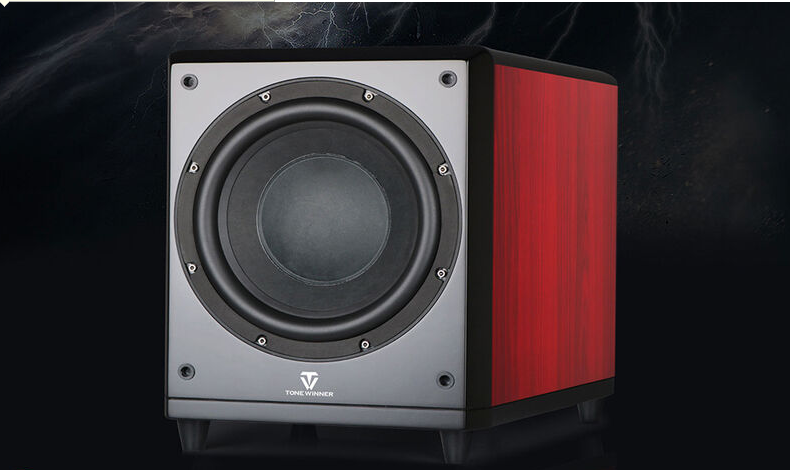
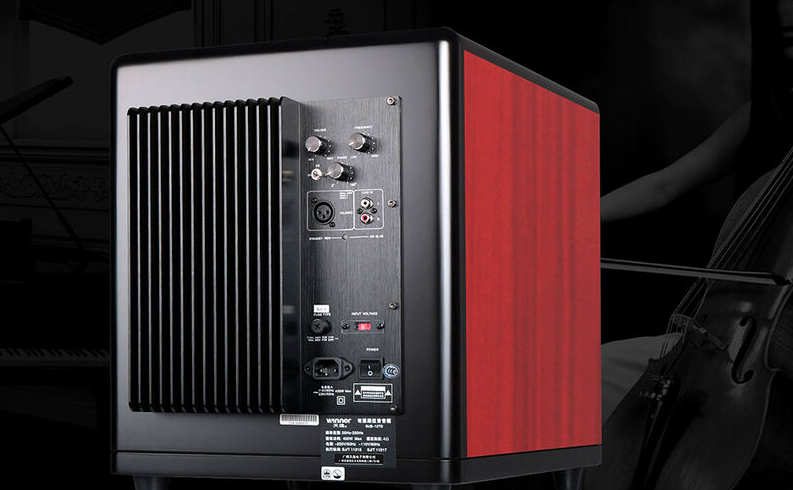
I. First of all, let's start with the various terminals (switches) on the back panel of Tianyi's two most classic active subwoofers SUB-1280 (digital class D amplifier) and Tianyi SUB-12TD (traditional analog circuit), as follows Figure 5 (SUB-1280) and Figure 6 (SUB-12TD):
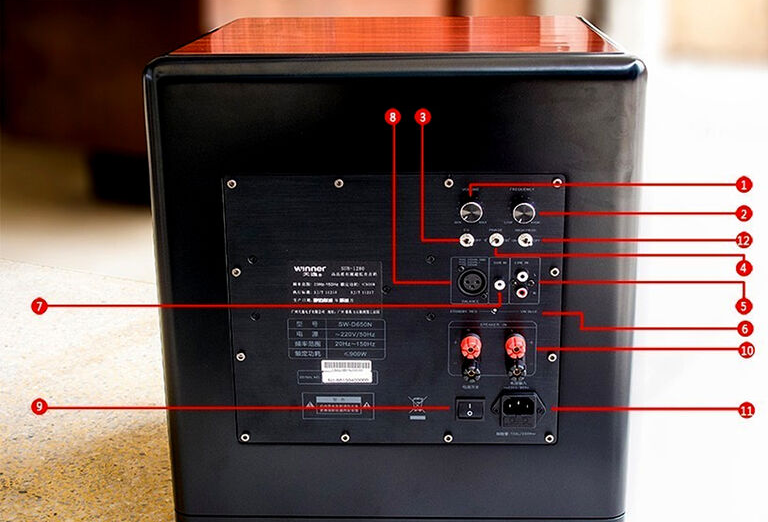 SUB-1280
SUB-1280
❶The VOLUME arranged on the left of the first row is the master volume adjustment knob of the active subwoofer. Turn it clockwise to increase the total volume of the subwoofer, and vice versa.
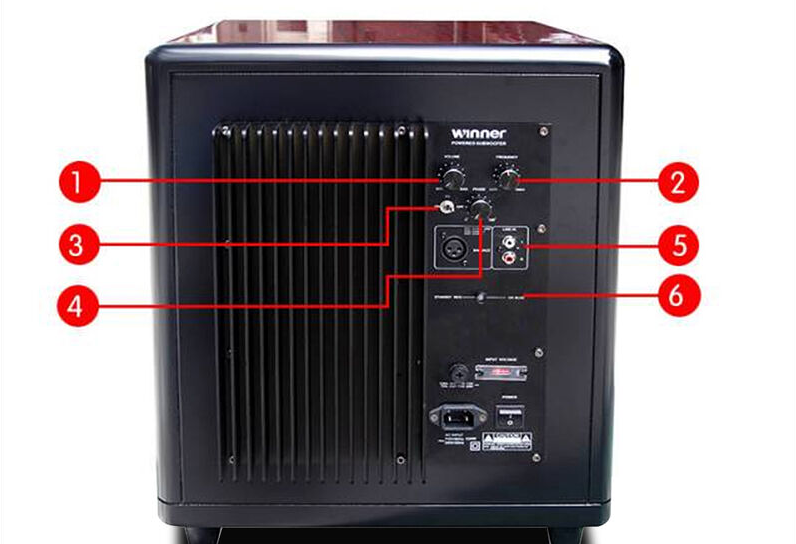
SUB-12TD
❷The right knob FREQUENCY is the frequency range adjustment knob, which is actually the high-pass filter circuit and low-cut circuit in the subwoofer input circuit. Turn it clockwise to the end, and the amplifier output is 25 Hz to 200 Hz. Turn it counterclockwise to the end, The amplifier outputs a low frequency signal of 25 to 80 Hz. Adjusting this knob is also called adjusting the knee of the subwoofer.
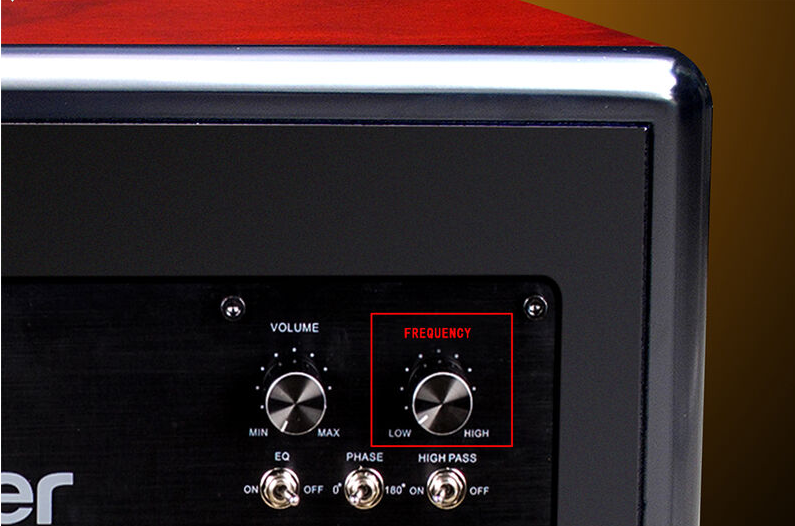 Specifically for Tianyi's SUB-1280, it is more appropriate to set the frequency inflection point to about 120--180Hz. In fact, you can select some discs with more low frequency, such as the low frequency of "Hotel California" of "The Eagles" in the United States, you can first adjust the frequency inflection point to about 120--180Hz, and then play this music repeatedly. Slowly fine-tune the frequency inflection point until you think it sounds the most natural, and the texture, density and dynamics of the low frequency are the most satisfactory. This is the frequency inflection point you are looking for. Also, adjusting the FREQUENCY knob mainly depends on the compatibility between the low frequency of the subwoofer and the low frequency of the main speaker. If it is not selected properly, it will cause the bass of the subwoofer and the bass of the main speaker to produce a discordant separation sound, which should attract everyone's attention.
Specifically for Tianyi's SUB-1280, it is more appropriate to set the frequency inflection point to about 120--180Hz. In fact, you can select some discs with more low frequency, such as the low frequency of "Hotel California" of "The Eagles" in the United States, you can first adjust the frequency inflection point to about 120--180Hz, and then play this music repeatedly. Slowly fine-tune the frequency inflection point until you think it sounds the most natural, and the texture, density and dynamics of the low frequency are the most satisfactory. This is the frequency inflection point you are looking for. Also, adjusting the FREQUENCY knob mainly depends on the compatibility between the low frequency of the subwoofer and the low frequency of the main speaker. If it is not selected properly, it will cause the bass of the subwoofer and the bass of the main speaker to produce a discordant separation sound, which should attract everyone's attention.
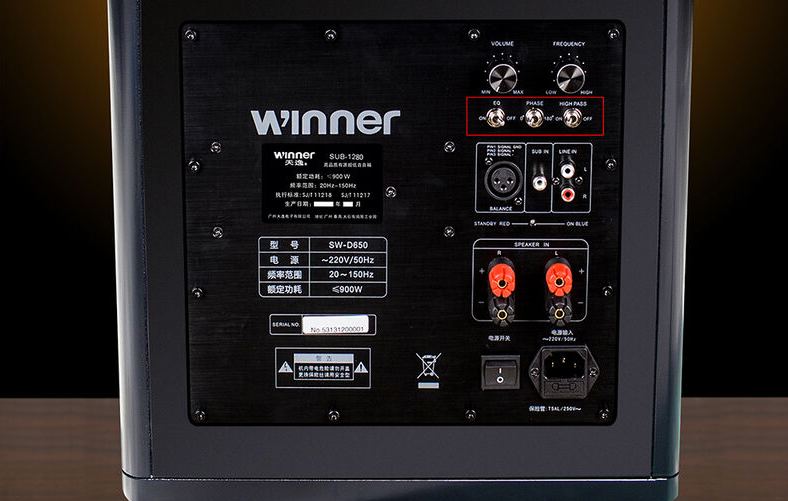
❸ The button switch on the left of the second row is the EQ (balance) adjustment switch of the subwoofer:
When the EQ adjustment switch is in the NO position, a certain section of frequency can be artificially increased to enhance the loudness of this frequency. When the EQ of the subwoofer is turned on, the frequency point of 40--50 Hz can be artificially increased by about 6dB. Enhance low frequency effects. Does not increase when EQ is off.
❹ The knob on the right side of the second row is the phase adjustment PHESE: the phase of the low-frequency signal output of the subwoofer must be consistent with the phase of the low-frequency output signal of the main speaker, so that they can be superimposed on each other to harmoniously enhance the overall low-frequency intensity and strength in the sound field. If the phases of the two are inconsistent, the low-frequency signal will conflict with each other at a certain frequency, resulting in the deterioration of the low-frequency signal, which will outweigh the gain. Careful adjustment: The method is: repeatedly switch the positive and negative phase switches, (SUB-12TD is to repeatedly rotate the phase 0--180 degrees), listen carefully at the normal listening position, and compare the positive and negative phases or the knob is in the 0 or 180 position , the low frequency performance is stronger and stronger, and there is a significant enhancement. At this point, the switch (or knob) can be placed in a position where the low frequency is better. But sometimes there is almost no difference in the low-frequency hearing between the two states. This is mainly because the placement of the subwoofer has not been adjusted. Change the placement of the subwoofer in the room and then adjust it. If you can't hear it, then set the switch to 0. Positioning; of course, if you change the main speakers, change the position of the main speakers or the subwoofer a lot, it is important to re-phase.
❺ and ❼ are the two ports for inputting bass signals, whichever port can be connected. ❽ on the left is a professional-level balanced input terminal, and ❺ and ❼ on the right are ordinary lotus terminal input ports, which can be connected to the subwoofer output terminals of the AV amplifier.
❻ Below is the power indicator. When the subwoofer is in the power-on standby state, it is red. After entering the working state, the indicator turns blue. If there is no signal for 10 minutes, the subwoofer will automatically switch to the standby state again, and the red light is on. rise.
❿ is the terminal for high-level input. I will introduce the high-level input in detail below.
❾ is the main power switch of the active subwoofer. ⑪ It is a three-core professional power cord socket.
There are four typical wiring methods for subwoofers:
The first:
If the amplifier you choose does not have a subwoofer output port, which means that you must rely on the decoder of the Blu-ray disc player to decode and output the subwoofer signal, then you can extract the subwoofer signal from the subwoofer of the Blu-ray disc player or AV receiver. The output terminal can be directly input to the SUB input terminal ❶ of the subwoofer. This connection method relies on the "Dolby/DTS" decoder of the Blu-ray disc player or AV amplifier, so only when the audio source itself records an ultra-low frequency signal and outputs it, the subwoofer will emit sound; it will not play a CD. There is sound output.
The second:
If the power amplifier you choose has a built-in decoder, your Blu-ray disc player output is input to the power amplifier using optical fiber, and relies on the built-in "Dolby Digital/DTS" decoder of the power amplifier to output ultra-low frequency signals. You can use a pair of audio signal cables to connect the super-heavy low-frequency signal (red and white ends) behind the power amplifier with the line input LINE IN L\R (red and white ends) ❷ of the subwoofer. This connection method also relies on the "Dolby Digital/DTS" decoder in the power amplifier, so only when the audio source itself records an ultra-low frequency signal and outputs it will the subwoofer emit sound, and there will be no bass when playing CDs. output. Maybe a friend's power amplifier ultra-low frequency output only has a lotus terminal output, then you can use a signal line to connect it to the red end of the subwoofer's line input LINE IN, because the subwoofer output is mono.
The third:
If you want to get super bass even when playing CDs, please connect a group of signals in parallel with the L (red) / R (white) terminals of the audio signal at the input of the HI-FI amplifier and connect them to the line input of the subwoofer respectively. LINE IN L\R (red end and white end)❷, the corresponding connection is OK, so when playing the CD, the subwoofer will also have a certain intensity of bass sound, but this input is a full-frequency audio signal and It is not really the subwoofer processed by DSP, and the effect will be slightly worse.
The fourth: high-level input wiring method:
If you want the subwoofer to emit super bass sound whether you are watching movies (with or without Dolby/DTS decoding) or playing CDs to listen to music, then I suggest you use the "high-level input" method: use the speaker cable Connect the high level input of the subwoofer to the left and right channel outputs of the power amplifier or the input terminals of the main speaker. And please make sure that the left channel is connected to the L port, the right channel is connected to the R port, 3 and the correct polarity (+ to +, - to -) is OK! But the difference between this connection method and the third connection method is not very obvious , the loudness of the subwoofer is not as good as the first and second.
The main points of subwoofer debugging are introduced:
First turn on your home theater system, set the home theater system to the correct working mode, ensure that the port connected to the subwoofer has signal output, then turn on the power switch of the subwoofer, and put the phase switch in the "0" position ( Factory setting), turn the volume knob and frequency adjustment knob to about one-third of the way.
Play a disc of your liking and you should hear the bass from the subwoofer.
You can also test your subwoofer with the test function of a Blu-ray player, home theater amplifier, preamplifier, or surround sound decoder. This function feeds a noise signal into each channel of the home theater system's speakers, and can be used to balance and calibrate the volume of each channel's speakers (including the subwoofer).
Note: The subwoofer only responds to the bass signal it receives, and many times the signal does not contain bass (such as character dialogue, violin playing, quiet scenes, etc.).
After completing the system test, perform the following tasks to achieve the best listening effect. As you go through each step, listen carefully and compare the changes in the sound (especially the bass part).
To play a music or song with strong low frequency and strong sense of rhythm, perform the following steps:
1. Position adjustment:
Use a long speaker cable to input the signal from the high-level input terminal, place the subwoofer in the normal listening position (such as the listening emperor's seat), adjust the volume to about one-third of the volume, and then place the subwoofer in each room in the room. move around. If the bass is heard significantly stronger somewhere, then the subwoofer should be placed there. Usually there is more than one place like this, please choose a place that is convenient for wiring and use.
2. Volume adjustment:
Adjust the volume so that the subwoofer's sound blends nicely with the main speaker's sound. Subwoofers are designed to compensate for the lack of bass in your existing home theater system, not to suppress their own performance. The sound of the subwoofer should blend in with the sound output by the entire system.
3. Phase adjustment:
a. Repeatedly toggle the phase switch, listen carefully at the normal listening position, and compare the low frequency performance of the switch at 0 or 180, and the low frequency performance is stronger and stronger;
b. Put the switch in a position where the low frequency is better;
c. Sometimes there is almost no difference in the low-frequency hearing between the two states, then set the switch to the 0 position;
d. If you have replaced the main speaker and changed the position of the main speaker or subwoofer a lot, you need to re-adjust the phase.
4. Frequency adjustment (knee point): Rotate the frequency range adjustment knob repeatedly. When the bass of the whole system sounds smooth and integrated, the frequency of the subwoofer is adjusted.
5. Appropriate adjustment again:
Because there will be a relationship between the position, sound phase and frequency of the subwoofer, adjusting one of them may affect the other two, so you need to repeat steps 3 and 4.